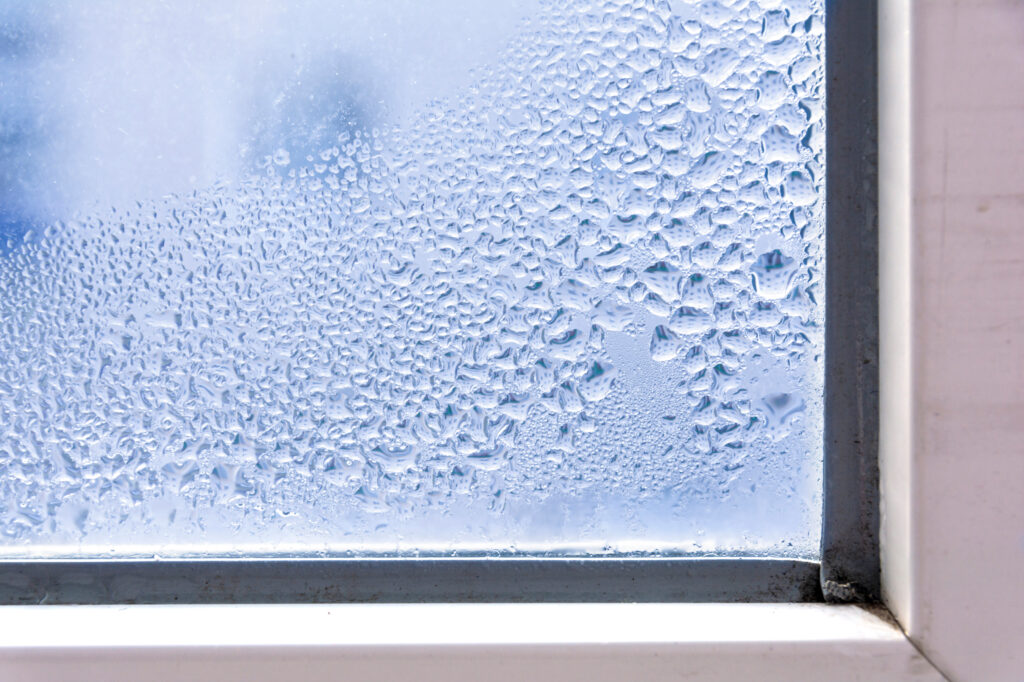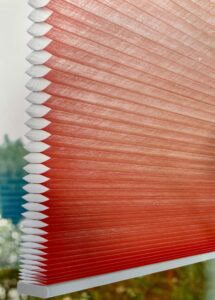Condensation in Winter: Causes, Quick Fixes, and How to Use Blinds & Shutters
As the nights draw in, many of us wake to misted-up windows and damp sills. Here’s a plain-English guide—with a dash of science—explaining why condensation happens, why it’s often worst at night, and how to use your shutters and blinds to keep it in check without losing comfort or privacy.
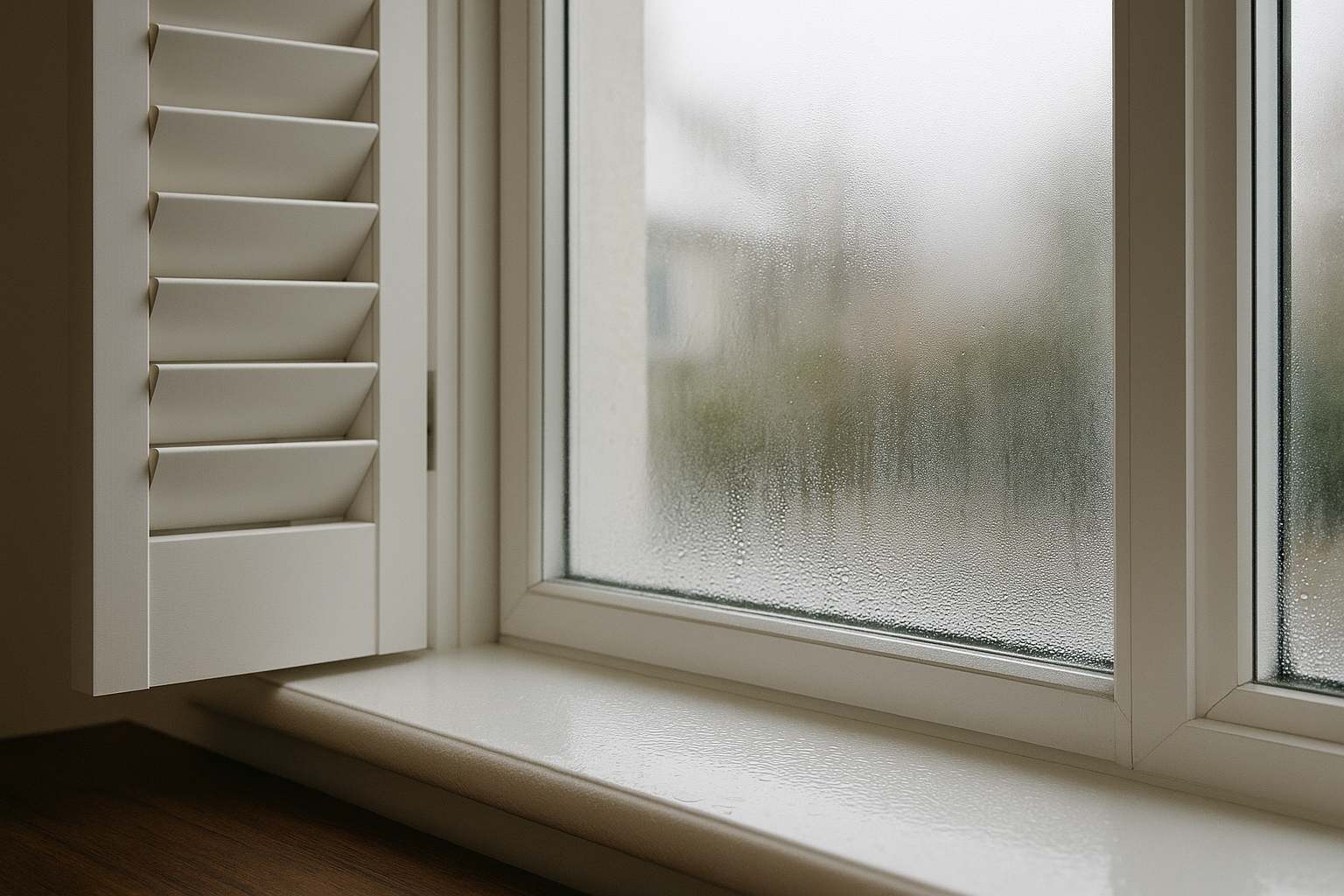
What Actually Causes Condensation?
Condensation appears when warm, moist indoor air touches a colder surface—usually your window glass—and cools to its dew point. At that point, water vapour turns into tiny droplets. Everyday life adds moisture to your rooms: cooking, kettles, showers and baths, laundry, even breathing and houseplants. If the moisture isn’t diluted or removed, it settles on the coldest surfaces first.
You’ll often see droplets form along the bottom edge and corners of the pane. These zones are typically the coldest, so they hit dew point first.
The Three Levers: Moisture, Temperature, Airflow
Reduce moisture: lids on pans, use the extractor, shorter showers, avoid drying clothes indoors if you can.
Keep surfaces warmer: steady background heat keeps glass closer to room temperature, giving you more margin above the dew point.
Keep air moving at the glass: background ventilation (trickle vents) and small gaps around coverings let air “wash” across the pane.
Trickle Vents, Purge Ventilation & Positioning
Trickle vents provide a gentle, continuous stream of outdoor air without major draughts. Keep them open unless there’s a specific reason not to. Add short “purge” openings—5–10 minutes with a window slightly ajar—after moisture-heavy activities such as cooking or showers.
Many vents sit at the top of the frame to minimise draughts and use buoyancy to move stale air out. Your instinct that we need air to move across the lower part of the glass is spot on—that’s where condensation often starts. The practical answer is to combine open vents with small, deliberate gaps in your shutters or blinds so air can circulate behind the covering and along the sill edge.
How to Use Louvred Shutters in Rooms Prone to Condensation
Shutters are superb insulators, but they also create a still-air pocket between shutter and glass. Overnight, that pocket can get very cold and reach dew point. Here’s how to keep the benefits without the droplets:
- Leave some louvres slightly open, ideally along the bottom third. A subtle tilt is enough to let a trickle of room air wash the glass behind the shutter.
- Don’t clamp the shutter tight against the frame on steamy evenings (post-bath or after a lot of cooking). Give it a tiny bit of breathing space.
- Morning routine: open the shutters to warm and dry the pane. Wipe any droplets from sills and seals so they don’t feed mould.
You may have chosen louvres for room darkening—totally fine. Overnight it’s dark anyway, so a slight tilt on the lower louvres won’t affect sleep but can dramatically cut condensation.
Using Insulating Blinds (e.g., Duette® / Honeycomb)
Honeycomb blinds add real insulation (great for comfort and bills), but the more insulating the blind, the cooler the glass can get if air is completely trapped behind it. Small tweaks make a big difference:
- Leave a small gap at the sill—about 10–15 mm—so air can circulate behind the fabric and along the cold bottom edge.
- Don’t press the fabric onto the glass. An inside-recess fit is perfect—just avoid contact.
- If you have top trickle vents, drop the blind a touch below the head as well, so air can enter at the top and exit via the sill gap.
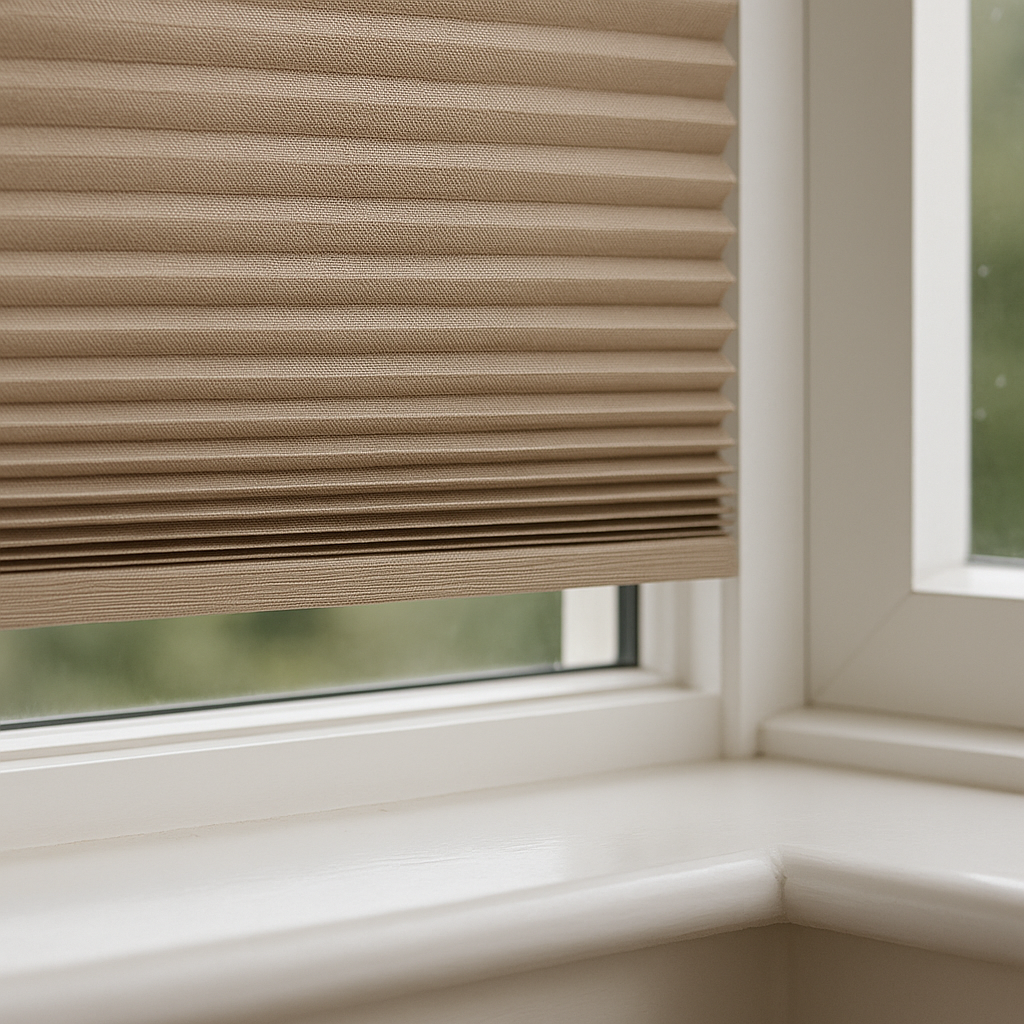
Kitchen & Bathroom Habits That Help Immediately
- Cooker hoods: ducted to the outside works best. Use during cooking and for 10–15 minutes afterwards. Keep lids on pans.
- Bath/shower: door closed; extractor on during and after. A neat trick: run cold water first, then hot—it can dramatically cut steam load.
- Laundry: avoid drying indoors. If you must, choose one ventilated room and close the door.
- Heating: a steady, low setting overnight usually beats short, hot bursts—the glass stays warmer and less prone to misting.
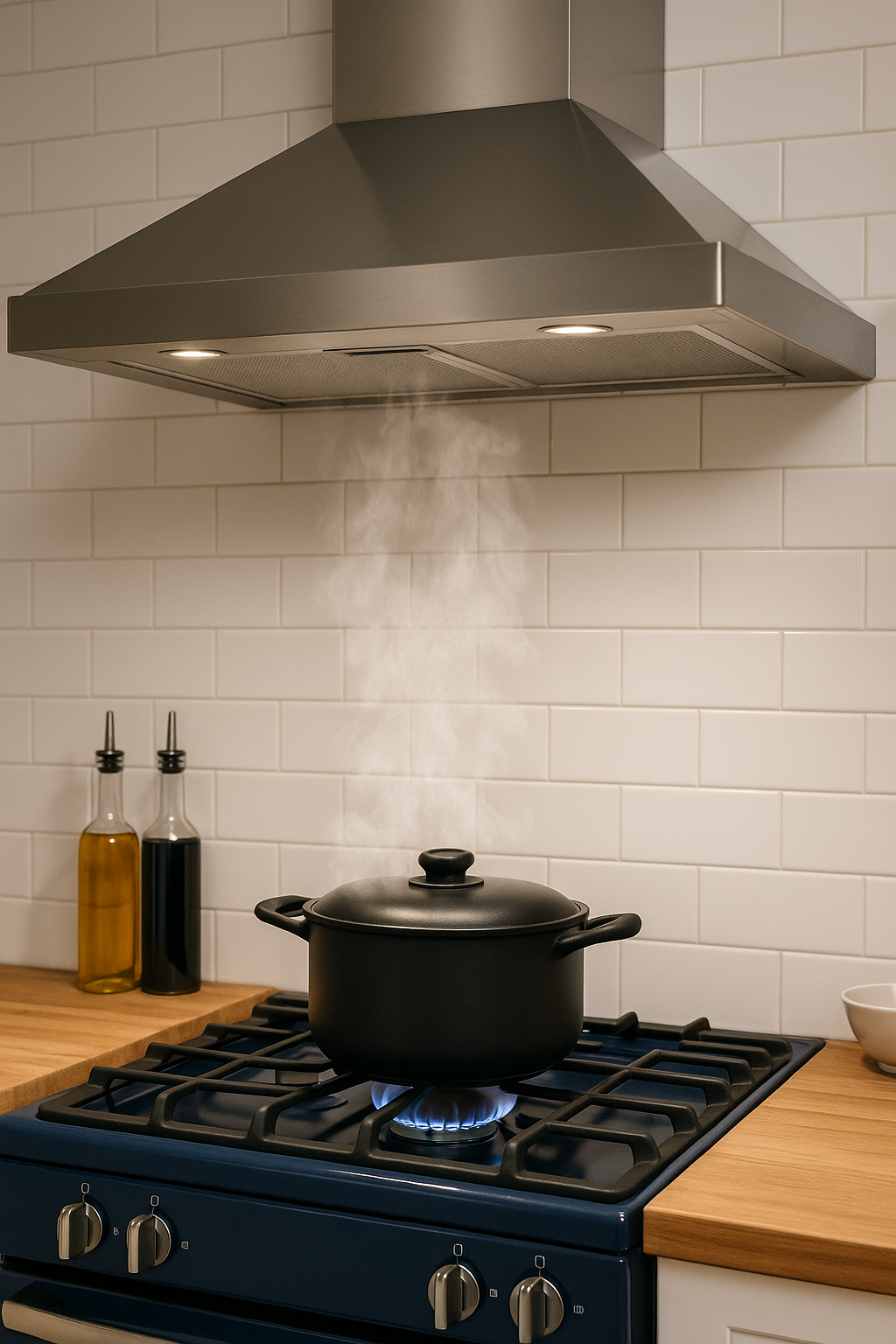
Dehumidifiers (and When They Make Sense)
If you’re seeing persistent moisture, a dehumidifier can help—especially in laundry rooms or bedrooms with heavy overnight condensation. A simple chooser rule keeps it easy:
- Cool spaces (under ~10 °C): pick a desiccant unit.
- Normal heated rooms: pick a compressor/refrigerant unit.
Size by litres/day for the room size and run with doors and windows closed. Empty and clean regularly.
Five Practical Steps to Stop Condensation Becoming Mould
- Clear existing condensation each morning (microfibre cloth, squeegee or window vac) so it can’t soak seals and sills.
- Limit moisture at source (extractors, lids on pans, shorter showers, avoid indoor drying).
- Improve ventilation (keep trickle vents open; use short window purges after steamy activities).
- Upgrade insulation (insulating blinds, well-fitted shutters, and better glazing help keep glass warmer).
- Set heating sensibly (steady background warmth beats on-off spikes).
When to Escalate
If you’re doing the above and still seeing heavy condensation or mould, consider a portable dehumidifier, check that trickle vents and pathways aren’t blocked by tight pelmets or coverings, and review the glazing itself in case of very cold or leaky units. Secondary glazing can also help.
Need Tailored Advice for Your Windows?
We’re shading specialists—not salespeople—and we’ve helped thousands of Scottish homes balance warmth, privacy and healthy ventilation. If you’re fighting winter condensation and want shutters or insulating blinds set up the right way, we can help.
Our Dundee and Edinburgh showrooms are open by appointment only so you get one-to-one time with an expert. We also offer home and virtual consultations.
Call 0800 086 2989 or book your appointment now.

